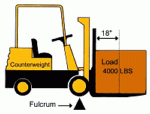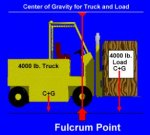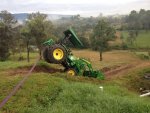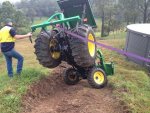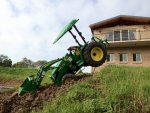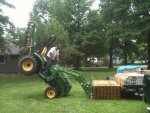This is a reprint of an article I wrote over on the GTT forum a few years ago, I thought it might be well received here as well, perhaps even maybe made a sticky for newer users/operators.
I will do my best to duplicate the same info, but I can't attach inline pictures and some links are dead now so I hope it all makes sense.
----------------------------------------------------------------------------
Let me start by saying that this subject is often hotly debated. It is my intention to provide what I believe to be facts, and I will back them up by providing links and references when possible. It is not my intention to cause any controversy or flame wars.
A few definitions from the Dictionary and Thesaurus - Merriam-Webster Online dictionary:
Ballast - Definition and More from the Free Merriam-Webster Dictionary:
Here is rather good description of what we are talking about taken from this link: Sorry link is dead now:
1) The front axle is not rated to carry that amount of weight and can fail either quickly, or slowly over time with leaking seals or worn bearings, knuckles and ties rod ends.
2) The front axle pivots at the center, so the tractor could "fall" over to the left or right casing a tip-over condition.
3) We only have brakes on the rear axle, so when it gets light then we loose braking ability. we also loose traction as the rear wheels get lighter.
4) It's much harder on the steering system.
In the forklift examples above, they show the fulcrum or pivot as the front wheels-but they are designed for that and generally the front wheels do not steer on a forklift-whereas we want to move this fulcrum or pivot further rearward so the the rear axle will carry the majority of the weight. How can that be accomplished? The ONLY way is to add weight BEHIND the rear axle. Loading the tires will help with traction and stability, but will not necessarily properly ballast the machine because that weight is already on the ground-it will not become "ballast" until the rear tires are lifted off the ground-and by then it's to late!
I will do my best to duplicate the same info, but I can't attach inline pictures and some links are dead now so I hope it all makes sense.
----------------------------------------------------------------------------
Let me start by saying that this subject is often hotly debated. It is my intention to provide what I believe to be facts, and I will back them up by providing links and references when possible. It is not my intention to cause any controversy or flame wars.
A few definitions from the Dictionary and Thesaurus - Merriam-Webster Online dictionary:
Ballast - Definition and More from the Free Merriam-Webster Dictionary:
Fulcrum - Definition and More from the Free Merriam-Webster Dictionary:1
: a heavy substance placed in such a way as to improve stability and control (as of the draft of a ship or the buoyancy of a balloon or submarine)
2
: something that gives stability (as in character or conduct)
So, this relates to us and our tractors how? Well, the ballast is what we use in the rear of our tractors to offset the weight that we often place on the front-usually with a FEL. The fulcrum or pivot point is the place on the tractor which balances the weight of the load on the front and the weight on the rear. I will illustrate this using example of forklifts since they are easier to find pictures of.a : prop; specifically : the support about which a lever turns
Here is rather good description of what we are talking about taken from this link: Sorry link is dead now:
What we do not want on our tractors-is for all the weight of the load and tractor on the front axle, and that will happen if the rear wheels come off the ground and the front wheels become the fulcrum or pivot point as the pictures clearly show. Four main reasons we want to avoid this are:The forklift is basically like a child's see saw, the load that is picked up is counterbalanced by a counter weight at the other side. If the load is too heavy for the counter weight then it will pivot at the fulcrum (the forklift will tip over forwards). Careful consideration must be taken to get the load as near to the fulcrum as possible as any gap here will be exaggerated and the forklift will not be able to pick up as much.
1) The front axle is not rated to carry that amount of weight and can fail either quickly, or slowly over time with leaking seals or worn bearings, knuckles and ties rod ends.
2) The front axle pivots at the center, so the tractor could "fall" over to the left or right casing a tip-over condition.
3) We only have brakes on the rear axle, so when it gets light then we loose braking ability. we also loose traction as the rear wheels get lighter.
4) It's much harder on the steering system.
In the forklift examples above, they show the fulcrum or pivot as the front wheels-but they are designed for that and generally the front wheels do not steer on a forklift-whereas we want to move this fulcrum or pivot further rearward so the the rear axle will carry the majority of the weight. How can that be accomplished? The ONLY way is to add weight BEHIND the rear axle. Loading the tires will help with traction and stability, but will not necessarily properly ballast the machine because that weight is already on the ground-it will not become "ballast" until the rear tires are lifted off the ground-and by then it's to late!
Attachments
-
9.1 KB Views: 312
-
10.9 KB Views: 278
-
15.9 KB Views: 292
-
8.9 KB Views: 282
Last edited:


